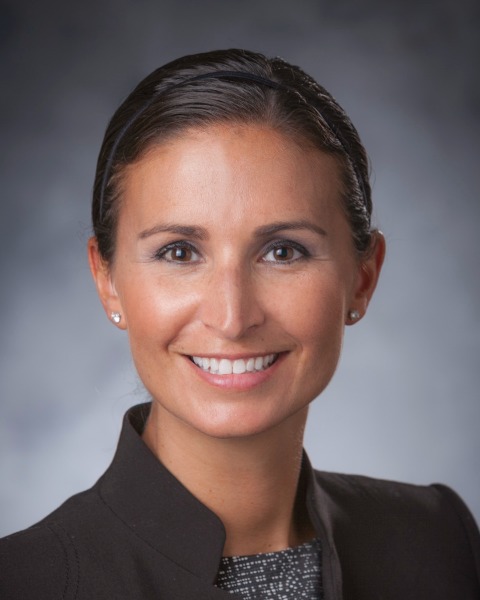Breast
4: International Validation of a Staging Model for de novo Metastatic Breast Cancer

Jennifer K. Plichta, MD, MS (she/her/hers)
Associate Professor of Surgery, Surgical Oncology
Duke University School of Medicine
Durham, North Carolina, United States
Jennifer K. Plichta, MD, MS (she/her/hers)
Associate Professor of Surgery, Surgical Oncology
Duke University School of Medicine
Durham, North Carolina, United States
Jennifer K. Plichta, MD, MS (she/her/hers)
Associate Professor of Surgery, Surgical Oncology
Duke University School of Medicine
Durham, North Carolina, United States- ST
Samantha M. Thomas, MS
Principal Biostatistician
Duke Cancer Institute, United States - SS
Sabine Siesling, PhD
Clinical Epidemiologist, Senior Researcher, Full Professor at University of Twente
Department of Research and Development, Netherlands Comprehensive CancerOrganisation (IKNL), Utrecht, The Netherlands; Department of Health Technology andServices Research, University of Twente, Technical Medical Centre, Enschede, TheNetherlands, United States - LD
Linda De Munck, MSc
Research
Department of Research and Development; Netherlands Comprehensive CancerOrganisation (IKNL), Utrecht, The Netherlands, United States - AL
Amélie Lusque, MS
Biostatistician
Biostatistics & Health Data Science Unit, Institut Claudius Regaud, IUCT-oncopole,Toulouse, France, United States - TG
Thomas Grinda, MD, MSc
Assistant spécialiste
Department of Cancer Medicine, Gustave Roussy, 114 Rue Edouard Vaillant, 94800Villejuif, France, United States - LG
Lovedeep Gondara, PhD, MS
Research Scientist
BCCancer –Data and Analytics, United States - SC
Stephen Chia, MD, FRCP
Physician
Medical Oncology, British Columbia Cancer Agency, Vancouver, BC, Canada, United States - PC
Paula Cabrera-Galeana, MD, MSc
Medical Oncologist
Breast Medical Oncology Department, Instituto Nacional de Cancerología, United States - NR
Nancy Reynoso-Noverón, MD, MS
Director of Research
Instituto Nacional de Cancerología, CDMX, México, United States - SL
Sara López-Tarruella Cobo, MD, PhD
Medical Oncologist
Hospital Universitario Gregorio Marañón, Instituto de Investigación Sanitaria GregorioMarañón (IiSGM), Universidad Complutense. CIBERONC-ISCIII. GEICAM Spanish BreastCancer Group. Madris, Spain, United States - IA
Isabel Alvarez Lopez, MD
Attending Physician
Medical Oncology Unit of Donostia University Hospital (Donostialdea IHO); GEICAM,Madrid, Spain, United States 
Stephen B. Edge, MD (he/him/his)
Professor of Oncology
Department of Surgical Oncology and Cancer Prevention and Control, University atBuffalo. Buffalo, NY, USA; Roswell Park Comprehensive Cancer Center. Buffalo, NY, USA
Buffalo, New York, United States- GH
Gabriel Hortobagyi, MD
Nellie B. Connally Chair in Breast Cancer
Department of Breast Medical Oncology, Division of Cancer Medicine, The University ofTexas MD Anderson Cancer Center, Houston, TX, USA, United States
Abstract Presenter(s)
Submitter(s)
Author(s)
A staging system was recently developed for de novo metastatic breast cancer (dnMBC) that stratifies patients into 4 subgroups (IVA/B/C/D) based on 3-year overall survival (OS): IVA >70%, IVB 50-70%, IVC 25-< 50%, IVD < 25%; primary factors affecting higher stage were negative for ER, PR, and HER2 and a higher number of involved organ sites. Here, we aim to validate this model using international data.
Methods:
dnMBC patients were selected from the Netherlands Cancer Registry (hosted by IKNL), Epidemiological Strategy and Medical Economics (ESME), British Columbia Cancer (BCCan), Instituto Nacional de Cancerología, México (INCan), and Grupo Español de Investigación en Cáncer de Mama (GEICAM); diagnosis years included varied by organization (range 2002-2021). Stage groups were assigned based on published criteria, defined by T-category, grade, ER, PR, HER2, histology, organ system site of metastases, and number of organ systems involved. Followup and OS were estimated using the reverse Kapan-Meier and Kaplan-Meier method. Cox proportional hazards models were used to estimate the association of stage with OS after adjustment for age (treatment data not available for all). For the ESME cohort, a subgroup multivariable analysis was used to estimate the association of stage with OS, adjusting for age and treatment.
Results:
The final validation cohort was comprised of N=11,199 patients: n=5063 (45.2%, IKNL), n=4139 (37.0%, ESME), n=774 (6.9%, BCCan), n=757 (6.8%, INCan), and n=466 (4.2% GEICAM). Median followup across all cohorts was 77.5 mo (95% CI 74.3-80.2). Patients were stratified into stage groups: IVA, n=603 (5.4%); IVB, n=5704 (50.9%); IVC, n=3356 (30.0%); IVD, n=1536 (13.7%). For all combined, the weighted average OS rates consistently decreased with increasing stage group; similar findings were noted for individual cohorts (all p< 0.001). On multivariable subgroup analysis including age, stage group was significantly associated with OS, and the risk of death increased with increasing stage (all p< 0.001; Table). On multivariable subgroup analysis for n=4139 patients (ESME cohort), stage group remained significantly associated with OS [IVA: reference; IVB: HR 1.51 (95% CI 1.17-1.93); IVC: HR 2.11 (95% CI 1.64-2.72); IVD: HR 3.60 (95% CI 2.75-4.70)] after adjusting for age and treatment.
Conclusions:
These findings provide external validation of previously published dnMBC staging criteria. This may guide future revisions of the AJCC staging guidelines and provide patients and providers valuable information when discussing therapy and goals of care.
Learning Objectives:
- Describe the proposed staging guidelines for patients with de novo metastatic breast cancer.
- Understand how the proposed staging guidelines for patients with de novo metastatic breast cancer may be helpful for patients and physicians.
- Communicate prognostic information more concisely for patients with de novo metastatic breast cancer, using the proposed staging guidelines.
